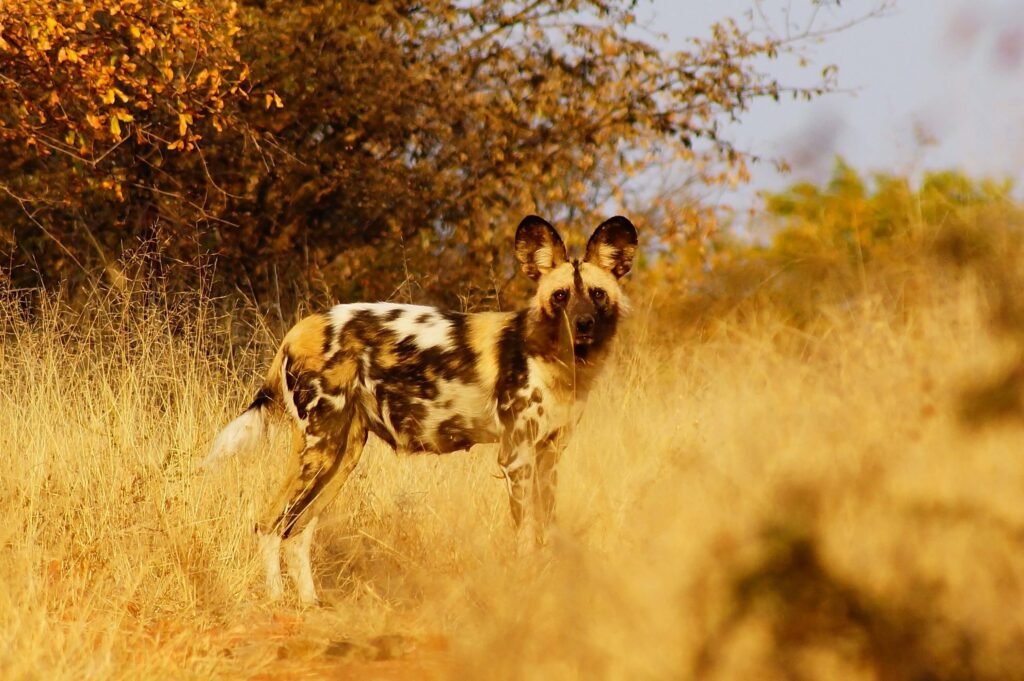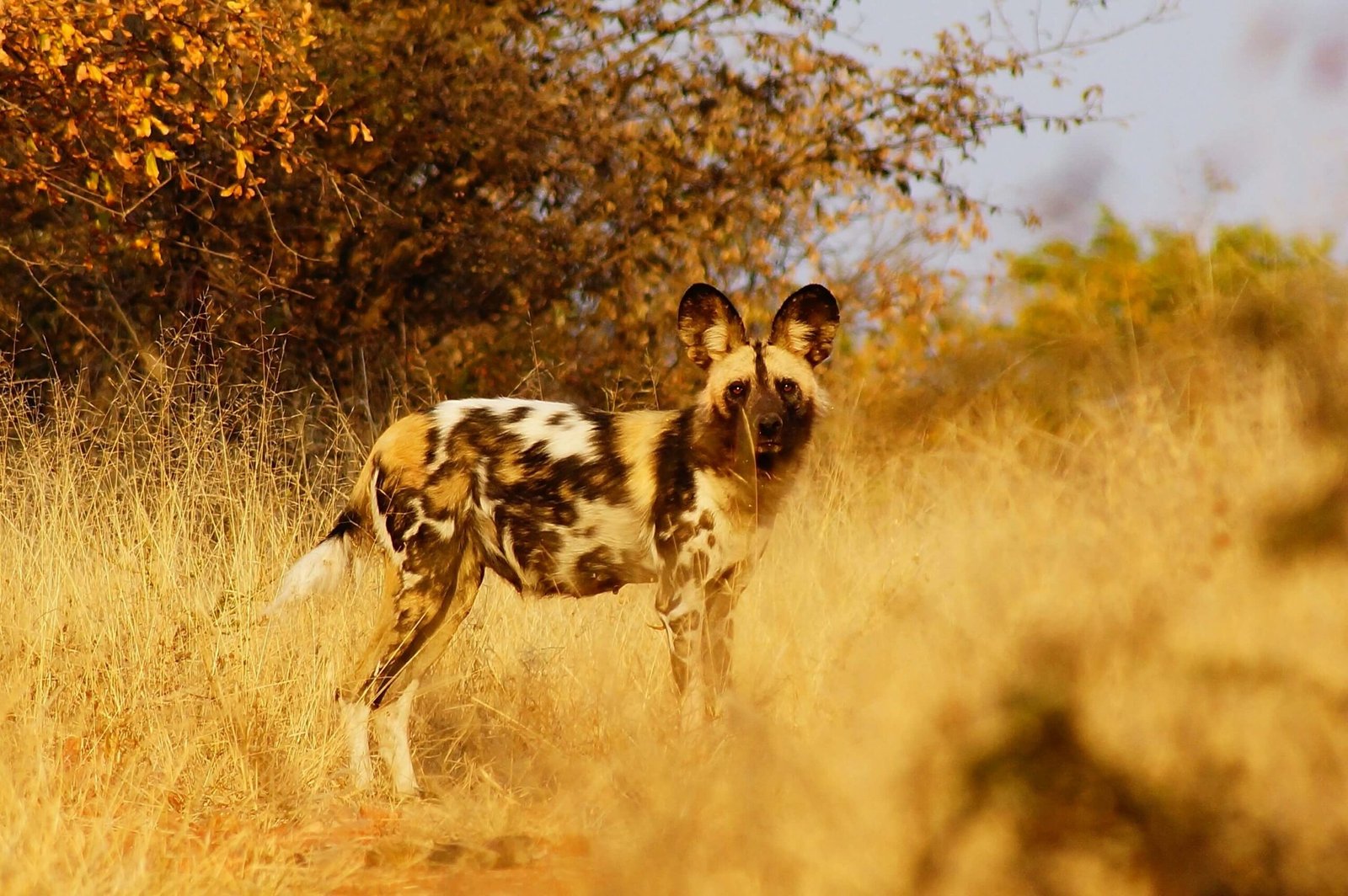Discover the Untamed Beauty of Wild Dog Breeds
When we think of dogs, images of loyal companions and playful pets often come to mind. However, beyond our domesticated friends lies a world of wild dog breeds that embody the raw essence of nature. These untamed canines roam freely across diverse landscapes, showcasing remarkable adaptability, intelligence, and resilience. From the vast savannas of Africa to the dense forests of Asia, wild dog breeds are a testament to the beauty and complexity of the natural world.
In this blog post, we will explore some of the most fascinating wild dog breeds, shedding light on their unique characteristics, behaviors, and the challenges they face in today’s world.
The Diversity of Wild Dog Breeds: A Snapshot
Wild dog breeds are as varied as the ecosystems they inhabit. Each breed has evolved to thrive in its specific environment, developing traits that make them perfectly suited for survival. Here’s a quick look at some of the most notable wild dog breeds and their defining features:
- African Wild Dog : Known for their striking patchwork coats and incredible hunting prowess, these dogs are highly social and live in tightly-knit packs.
- Dingo : Native to Australia, dingoes are versatile hunters with a reputation for their cunning and resourcefulness.
- New Guinea Singing Dog : Famous for their unique vocalizations, these dogs are incredibly agile and well-adapted to mountainous terrains.
- Indian Pariah Dog : Often found roaming freely in rural areas, these dogs are resilient survivors with a strong sense of independence.
- Coyote : While not a true dog breed, coyotes share many traits with wild canines and are masters of adaptation.
These breeds highlight the incredible diversity within the wild dog family, each one uniquely adapted to its environment. Understanding these differences is key to appreciating the role they play in maintaining ecological balance.
Characteristics That Define Wild Dog Breeds
What sets wild dog breeds apart from their domesticated counterparts? These animals possess a range of traits that enable them to survive in the wild. Below are some of the most notable characteristics shared by many wild dog breeds:
- Social Structure : Most wild dogs live in packs, which allows them to hunt more effectively and protect their young.
- Adaptability : Whether it’s extreme weather or scarce resources, wild dogs have an uncanny ability to adapt to changing conditions.
- Communication Skills : From vocalizations to body language, wild dogs use sophisticated methods to communicate with one another.
- Physical Endurance : Many wild dog breeds are built for long-distance running, making them efficient hunters.
- Camouflage Coats : Their fur patterns often blend seamlessly with their surroundings, providing excellent camouflage.
These characteristics not only make wild dog breeds fascinating but also underscore their importance in the ecosystems they inhabit. Their survival skills are a testament to the resilience of nature itself.
Expert Opinion: The Importance of Conserving Wild Dog Breeds
Dr. Emily Carter, a renowned wildlife biologist, emphasizes that wild dogs are vital to ecosystem health, stating, “Their role as apex predators ensures biodiversity and habitat balance. Protecting them is not just an ethical responsibility but a necessity for maintaining ecological stability.” She advocates for increased global conservation efforts to safeguard their future.
Check this guide 👉African Wild Dog vs Hyena: Best 6 Expert Insights!

Trait | Example in Wild Dog Breeds |
|---|---|
Hunting Strategy | African Wild Dogs use teamwork to chase prey. |
Vocalization | New Guinea Singing Dogs produce melodic howls. |
Adaptation to Terrain | Dingoes navigate rugged Australian outbacks. |
Social Behavior | Coyotes form flexible partnerships during hunts. |
Camouflage | Indian Pariah Dogs blend into rural landscapes. |
Challenges Faced by Wild Dog Breeds
Despite their resilience, wild dog breeds face numerous threats that endanger their survival. Habitat loss, human-wildlife conflict, and climate change are just a few of the challenges these remarkable animals must contend with. Let’s take a closer look at some of the key issues affecting wild dog populations:
- Habitat Destruction : Urbanization and deforestation reduce the available space for wild dogs to roam and hunt.
- Poaching and Hunting : Some wild dogs are targeted for their fur or killed out of fear due to misconceptions about their behavior.
- Disease Outbreaks : Contact with domestic animals can expose wild dogs to diseases like rabies and distemper.
- Competition for Resources : Larger predators and human activities often compete with wild dogs for food and territory.
- Climate Change : Altered weather patterns disrupt migration routes and prey availability.
Addressing these challenges requires global cooperation and conservation efforts. By raising awareness, we can work toward ensuring a brighter future for these incredible creatures.
Conservation Efforts for Wild Dog Breeds
Thankfully, there are ongoing initiatives aimed at protecting wild dog breeds and preserving their habitats. Conservationists around the world are working tirelessly to safeguard these animals from extinction. Here are some of the strategies being implemented:
- Protected Reserves : Establishing national parks and wildlife sanctuaries provides safe havens for wild dogs.
- Community Engagement : Educating local communities about the importance of wild dogs fosters coexistence and reduces conflict.
- Research Programs : Scientists study wild dog behavior and genetics to better understand their needs and vulnerabilities.
- Anti-Poaching Measures : Strengthening laws and increasing patrols helps combat illegal hunting and poaching.
- Breeding Programs : Captive breeding initiatives aim to boost population numbers of endangered species.
These efforts demonstrate humanity’s commitment to preserving the natural world. With continued dedication, we can ensure that future generations will have the opportunity to witness the majesty of wild dog breeds.
The Role of Wild Dogs in Ecosystems
Wild dog breeds play a crucial role in maintaining the balance of ecosystems. As apex predators or scavengers, they help regulate prey populations and prevent overgrazing, which can lead to habitat degradation. Their presence ensures the health of the environment by removing weak or sick animals from the gene pool. Below are some key contributions wild dogs make to their ecosystems:
- Population Control : By preying on herbivores, wild dogs prevent overpopulation, which could otherwise lead to resource depletion.
- Disease Prevention : Removing sick or injured animals reduces the spread of diseases among wildlife populations.
- Nutrient Cycling : Scavenging behaviors contribute to the decomposition process, enriching soil with nutrients.
- Biodiversity Support : By controlling dominant species, wild dogs create opportunities for less competitive species to thrive.
- Seed Dispersal : Through their movements and diets, wild dogs inadvertently assist in spreading seeds across landscapes.
The intricate role wild dogs play in ecosystems highlights their importance as keystone species. Protecting them is not just about preserving individual animals but ensuring the health of entire ecosystems.
Unique Behaviors of Wild Dog Breeds
One of the most fascinating aspects of wild dog breeds is their unique behaviors, which have evolved over thousands of years to enhance survival. These behaviors are often highly specialized and adapted to their environments. Here’s a glimpse into some of the remarkable behaviors exhibited by wild dogs:
- Cooperative Hunting : Many wild dogs, such as African Wild Dogs, rely on teamwork to take down prey much larger than themselves.
- Vocal Communication : Singing Dogs and Coyotes use complex vocalizations to coordinate movements and maintain social bonds.
- Territorial Marking : Wild dogs use scent marking to establish boundaries and avoid conflicts with neighboring packs.
- Playful Socialization : Pups engage in play to develop hunting skills and strengthen pack cohesion.
- Adaptive Resting Patterns : Some wild dogs adjust their activity levels based on temperature, resting during the heat of the day and hunting at night.
These behaviors underscore the intelligence and adaptability of wild dog breeds. Understanding these traits helps us appreciate their complexity and the challenges they face in changing environments.
Misconceptions About Wild Dogs
Despite their ecological importance, wild dogs are often misunderstood. Misconceptions about their behavior and impact on human communities can lead to fear and conflict. Addressing these myths is essential to fostering coexistence and promoting conservation efforts. Here are some common misconceptions about wild dogs:
- Myth: Wild dogs are aggressive toward humans.
Reality: Most wild dogs avoid human contact unless provoked or cornered. - Myth: They pose a significant threat to livestock.
Reality: While occasional predation occurs, it is often exaggerated compared to other threats like disease. - Myth: Wild dogs are invasive species.
Reality: Many wild dog breeds, like Dingoes, are native to their regions and integral to local ecosystems. - Myth: They carry diseases that easily spread to humans.
Reality: Disease transmission is rare and typically occurs through direct contact with domestic animals. - Myth: Wild dogs cannot survive without human intervention.
Reality: Wild dogs are highly self-sufficient and have thrived in diverse environments for millennia.
Dispelling these misconceptions is vital for reducing human-wildlife conflict and encouraging proactive conservation. By separating fact from fiction, we can build a more harmonious relationship with these incredible animals.
Frequently Asked Questions About Wild Dog Breeds
What makes wild dogs different from domesticated dogs?
Wild dogs rely on instinct and survival skills, while domesticated dogs depend on humans for care and shelter.
Are all wild dogs aggressive?
No, wild dogs are generally shy and avoid human contact unless provoked or threatened.
Why are African Wild Dogs endangered?
Habitat loss, disease, and human-wildlife conflict are the primary reasons for their declining numbers.
Can wild dogs be tamed?
While possible, taming wild dogs is challenging and often detrimental to their well-being.
How can I support wild dog conservation?
You can donate to reputable organizations, volunteer, or spread awareness about the importance of protecting these animals.
Celebrating the Legacy of Wild Dog Breeds
In conclusion, wild dog breeds represent a vital part of our planet’s biodiversity. Their strength, intelligence, and adaptability serve as a reminder of nature’s ingenuity. As stewards of the Earth, it is our responsibility to protect these magnificent creatures and the ecosystems they call home. By supporting conservation efforts and fostering a deeper understanding of wild dogs, we can ensure that their legacy endures for generations to come. Let us celebrate the untamed beauty of wild dog breeds and work together to preserve the harmony of the natural world.
Understanding Scabs in Dogs Ears: Best 7 Tips! Learn how to identify, treat, and prevent scabs in your dog’s ears for optimal ear health.
Is Cinnamon Bad for Dogs? Best 7 Health Tips! Discover safe ways to use cinnamon, risks to avoid, and expert advice to keep your dog healthy.
Can Dogs Get Pneumonia from Humans? Best 7 Tips! Learn how to protect your dog, understand transmission risks, and ensure their respiratory health.
Can Dog Urine Make You Sick? Best 7 Health Tips! Learn how to stay safe, prevent illness, and handle exposure to dog urine effectively.





